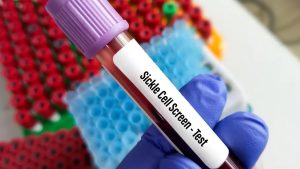Fibroids are growths of benign tumours inside a uterus, commonly found in over 20% of young women. Fibroid growths vary in size and can be as small as a pin to as large as a ball. Often causing cramps and bleeding, the severity of a fibroid can depend on its location, size, and age of the patient.
According to Dr Rishma Dhillon Pai, Consultant Gynaecologist & Infertility specialist attached to Lilavati Hospital, Jaslok Hospital and Hinduja Healthcare Surgicals Hospital, there are various types of fibroids including-
1. Subserosal fibroids
These types of fibroids grow on the outer end of a woman’s uterus. Due to their location, they rarely are a cause of concern. Although bigger fibroids can cause pressure on the bladder or intestines, making the patient experience pain or discomfort while urinating or defecating. These types of fibroids can be visible as a bulge or pouch inside the lower stomach, and can appear as big as a 3-5 month size pregnancy if their size increases.
Larger ones that cause discomfort need to be removed through conventional cut and stitch surgery. The process of healing is rather long and complicated, and the surgical procedure has the tendency to develop adhesions, causing chronic stomach pain or infertility.
As of late, laparoscopic surgery has gained prominence for being less invasive. It involves a telescopic camera inserted inside a stomach, which helps in performing surgery. The procedure does not leave a big noticeable scar unlike conventional surgery. The modern procedure is done via a machine known as Morcellator and does not leave much room for post-surgical complications.
Also Read: Common period myths busted: Cramps, food habits and workouts
2. Intramural fibroids
These fibroids are located in the middle of the womb or uterus, causing period pain, heavy bleeding and pregnancy related complications. The process to remove intramural fibroids is the same as serosal fibroids.
3. Submucous fibroids
Submucous fibroids are known to be the most problematic of all. These growths occur on the inner side of the womb, where a baby grows. The fibroids can cause heavy, painful, and irregular menstrual cycles, as well as abortions or infertility. Hysteroscopic surgery is performed to remove the growths. It involves a laser, known as Resectoscope that vaporises the fibroid after being inserted through the vagina.
Also Read: COVID-induced stress affects women’s reproductive health, study shows
Fibroids often have the tendency to regrow after being removed.
According to Dr. Rishma Dhillon Pai, women of all ages must undergo regular gynecological check ups to rule out the chances of developing fibroids.






